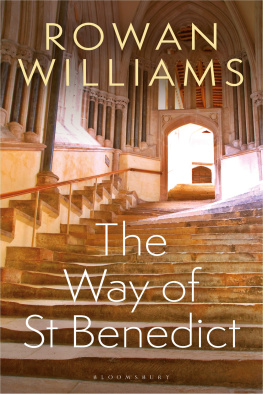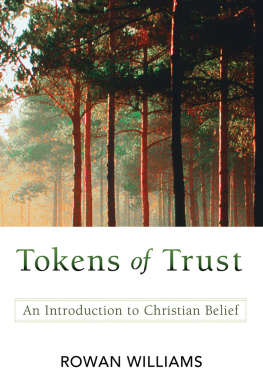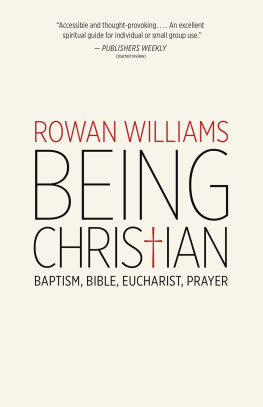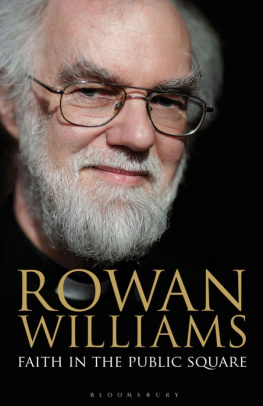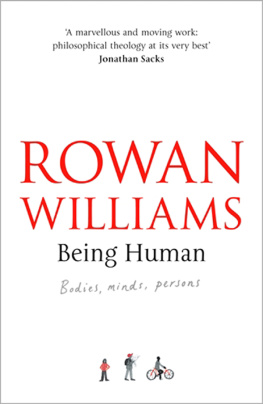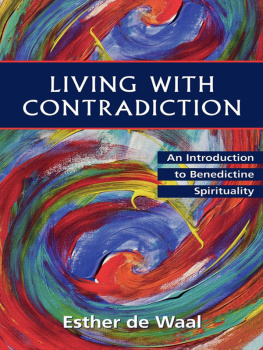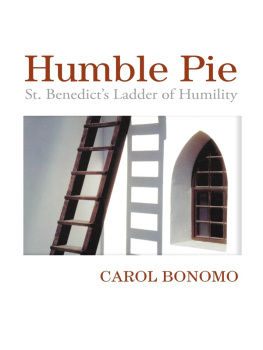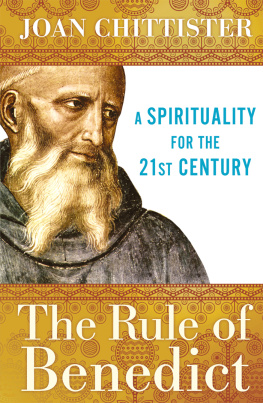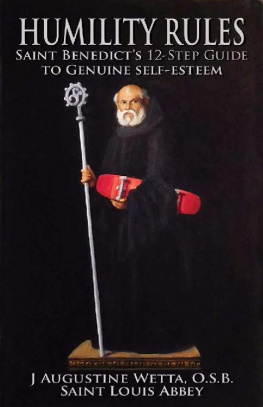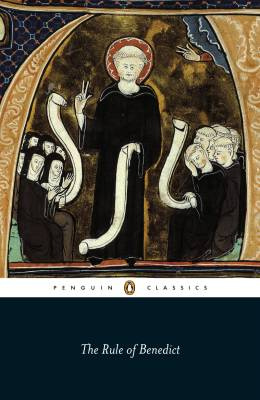

Contents
was published as Gods Workshop in Rowan Williams, Holy Living: The Christian Tradition for Today (London: Bloomsbury, 2017), pp. 5369. As this chapter is central to Dr Rowan Williams thinking on St Benedict, it has been decided to reprint it also in the volume.
A version of was published in Claire Foster-Gilbert, ed., The Moral Heart of Public Service (London: Jessica Kingsley Publications, 2017), pp. 17289; the present text is extensively revised.
An earlier version of was published as Three Styles of Monastic Reform in Benedicta Ward, ed., The Influence of Saint Bernard: Anglican Essays with an Introduction by Jean Leclercq OSB (Oxford: Fairacres Publications, 1976), pp. 2340.
An earlier version of was published as Butlers Western Mysticism: Towards an Assessment, The Downside Review, July 1984, pp. 197215.
For fifteen hundred years, the Rule of St Benedict has been one of the most influential texts in the culture of Western Europe. Relatively brief as it is, and observed in its fullness only by a limited number of people, it has nonetheless touched countless lives by the mere fact that it has shaped personalities who have in turn shaped their societies. The buildings that once housed communities living by the Rule still dominate many landscapes not least in the heart of London, where Westminster Abbey stands alongside the great edifices that represent the authority of the law and the processes of government. Women and men who followed the Rule played significant roles in culture and politics in the Middle Ages; but more importantly, the round of daily prayer offered a steady ground bass in the background of intellectual and artistic life, transformative agricultural labour, the provision of welfare for the destitute and a good deal more. In the sixteenth and eighteenth and early twentieth centuries, in Britain, France and Central Europe, Benedictine monasticism endured serious, sometimes extremely violent, disruptions. But these signally failed to destroy the Benedictine family: communities survived and more than survived, often finding renewed energy and integrity in coming to terms with these crises. Benedictine communities continue to attract visitors, casual callers and less casual retreatants. In 2005, a television series tracking the experience of a very diverse group of men staying for a period at Worth Abbey in Sussex won great acclaim and popularity.
The chapters in this little book will, I hope, help to flesh out in various ways something of the appeal of Benedictine life. It speaks to people of the extraordinary power of stability not a static and frozen style of life, but a solid commitment to accompany one another in the search for a way to live honestly and constructively together in the presence of God. This stability is expressed in the habitually prosaic language of the Rule: it is about acquiring tools for living accountably alongside others, for learning how to pay attention to others, for identifying and rectifying your own unthinking self-centredness.others, the search for deeper intimacy with God will lead to destructive illusion.
That being said, Benedictines have regularly been among the foremost teachers of prayer, from St Gregory the Great to St Anselm or the early Cistercians. The English Benedictine Congregation, displaced after the Reformation, developed a very distinctive focus on contemplative prayer in the early seventeenth century, especially in the prolific works of the Welsh exile, Augustine Baker, and in the life and writings of some of his associates among the English nuns in the Low Countries, women like the great Gertrude More (descendant of St Thomas More).In effect, the Benedictine focus on stability or fidelity is here taken as foundational for the life of prayer itself: what matters is staying put. Although Abbot Chapmans teaching is clearly and explicitly marked by his reading of the Carmelites and, even more, of the Jesuit Jean-Pierre de Caussade, it is significant that he chooses to identify it as in some sense typically Benedictine.
As the chapter in the present book on Abbot Cuthbert Butler mentions, the legacy of this strong contemplative tradition was to cause some tension in early to mid-twentieth-century English Benedictinism, increasingly committed to educational and pastoral work outside the heart of the monastic enclosure. On the whole, the commitment to large-scale institutional activities prevailed in most houses by the third quarter of the century, though individuals continued to flourish as teachers of prayer (Christopher Butler and Sebastian Moore, both of Downside Abbey, were, in their dramatically different idioms, deeply influential). It may be that in the current time of crisis and serous scandal in conventional English Benedictine life, the spirit of Baker and others like him will prove crucial in the renewal of ideals and credibility for the future.
But the significant point is simply that the attention to one another which the common life requires and the attention to God which is the heart of contemplation are inseparably bound together. Benedictine stability is the context in which we learn to sit still with whatever company arrives, in the confidence that God in Christ sits still with us; and the practice of this sitting still (which may actually be working together or singing together at least as much as praying silently together) slowly permits us to stay in one place long enough for us to open up to Gods gift in whatever is encountered. And in this light, it is quite important to understand what the Rule is and is not meant to be. It is not a legal code but a set of firm and agreed guidelines for common life. As one of the studies in this book explains, the culture of the early medieval Church led to an emphasis in some quarters, especially among the Cistercians, the most influential Benedictine reform movement of the period, on the Rule as a quasi-legal text; but the history of Benedictine life had always been, and continued to be, a story of considerable diversity. As far as we can tell, the Rule was adopted gradually by a number of monastic communities in Italy and more widely during the sixth century, but it did not become the charter of a single order. As in the Eastern Church of the time (and the East has stuck to this up to the present day), monks and nuns were simply monks and nuns, each monastery following a customary pattern shaped overall by one or more classic texts on the life (for Eastern monks, predominantly the Rules of St Basil). Benedicts Rule emerged as the most attractive and practical, and had the added advantage of association with the immensely influential figure of Pope Gregory the Great, from whom most of our information about Benedict derives. But it was never designed to be an inflexible code; and again and again in modern times it has proved to be adaptable to many different situations, and has provided a structure for laypeople living in families and workplaces as well as intentional communities. In 1964, Pope Paul VI declared Benedict to be the patron saint of Europe; and this surely relates not only to the historical importance of Benedictine monasticism in the development of European culture, but also to this sense of a discipline of common life that secured justice by mandating attention and urged on everyone the need for a passion directed towards shared goods.

